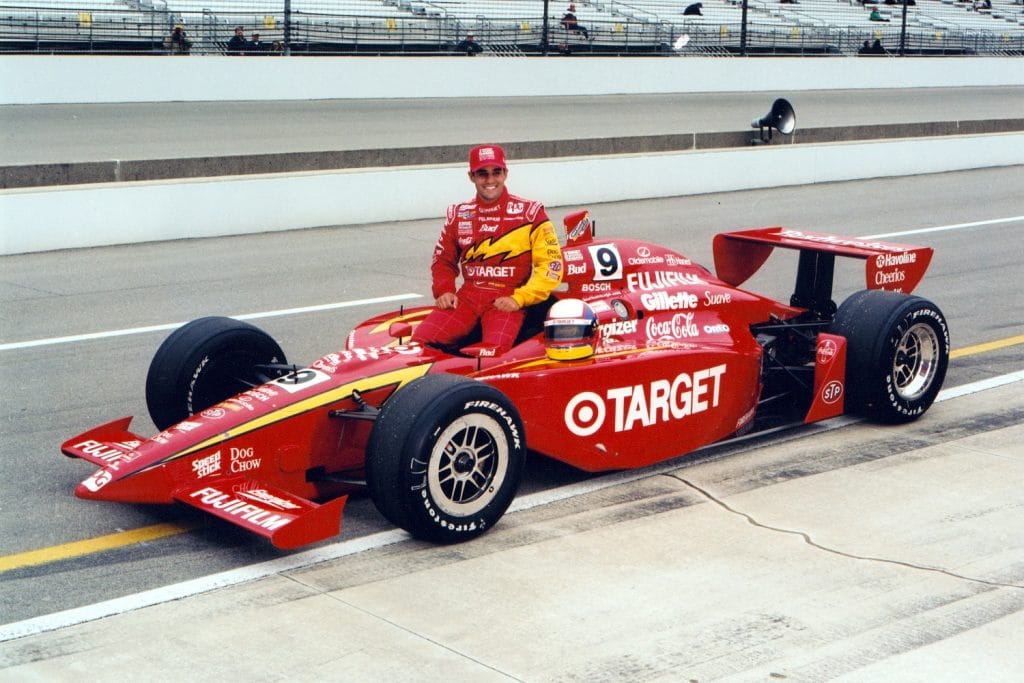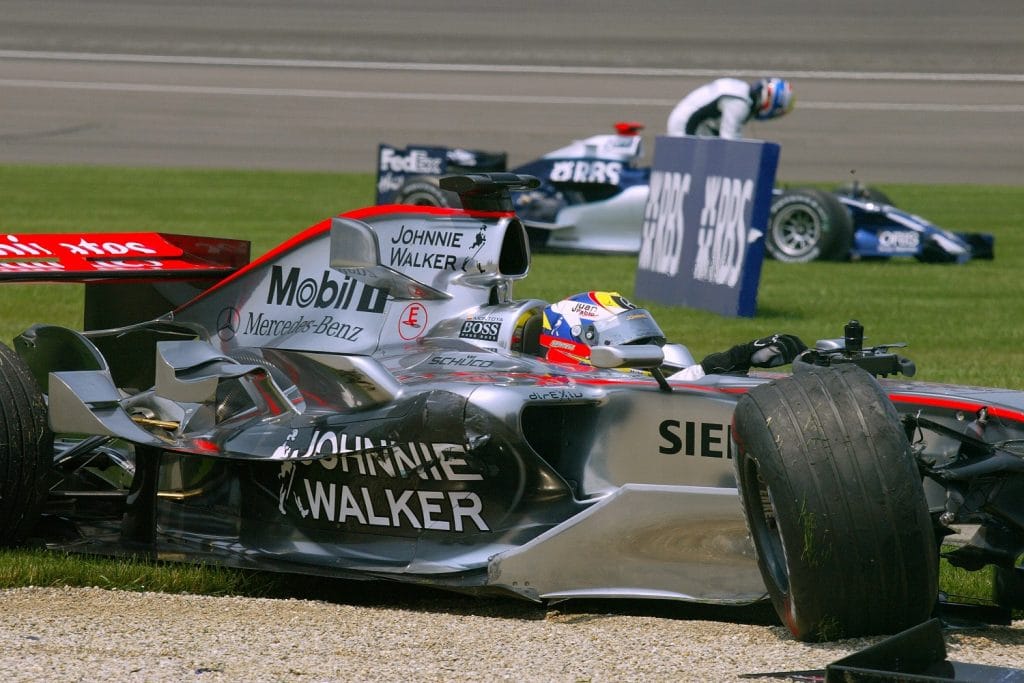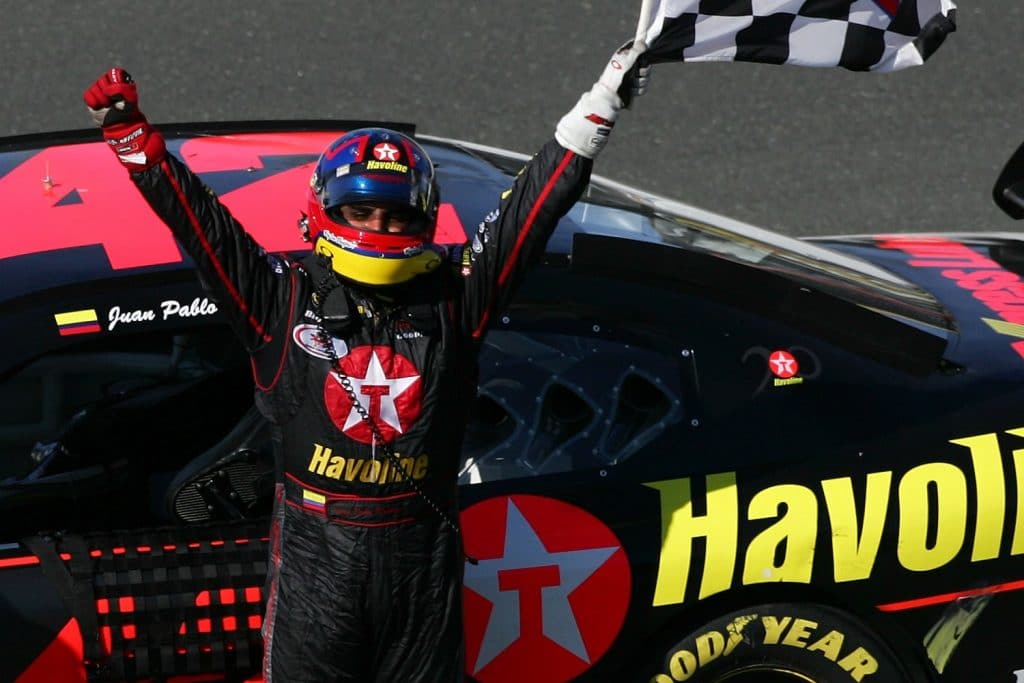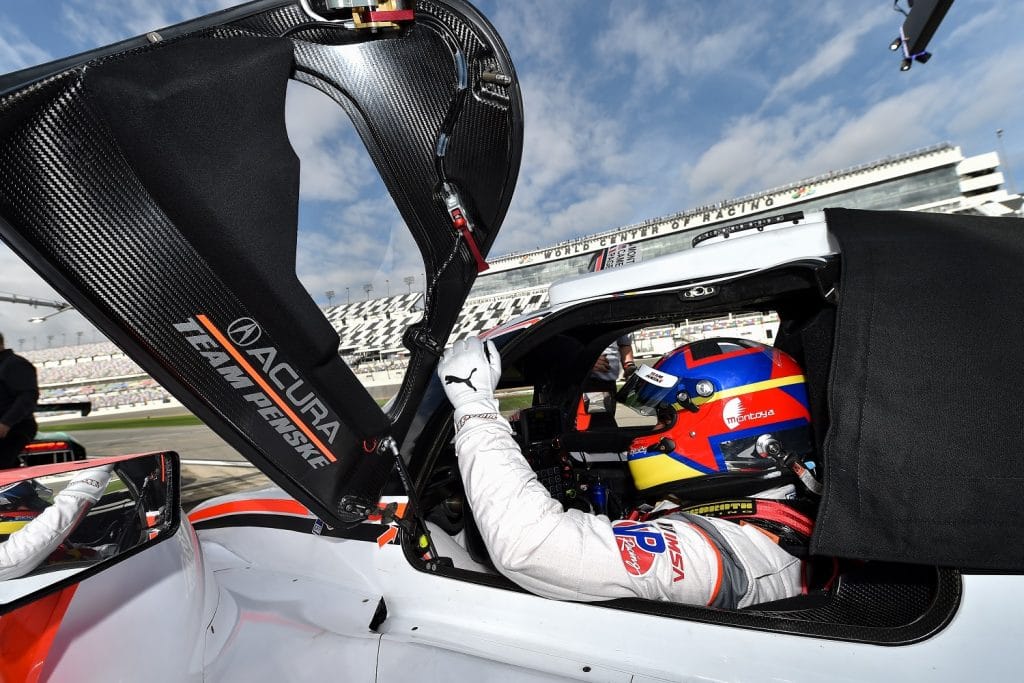Chapter Twelve of the Driver Spotlight Series looks at one of the quickest drivers motorsport has ever seen and a driver I have always questioned as to, why has he never had a proper go at winning Le Mans to complete the Triple Crown? That is of course Juan Pablo Montoya.
Montoya is one of the most versatile drivers in the modern era having won races in Formula 1, IndyCar, NASCAR and Sports Cars.
For pure speed and getting a car around a track as fast as you can, peak Montoya has to be a name you want in the race car.
He came to the fore in F3000 in 1998 and was a demon on the track. Four consecutive pole positions and lapping the entire field at the Pau Grand Prix said it all, on his way to the championship.
Incredibly, Montoya won the 1999 CART championship (ChampCar) on his debut. He was level with Dario Franchitti on points but usurped the 26-year-old having won seven races that season to Franchitti’s two.
It does not show the full picture though because after just a few months, Montoya had created an aura that he would be very tough to beat even before the weekend began.
Montoya lost likely race wins in Motegi, Road America, and Detroit due to mechanical issues or team errors whilst, also wracking up a few errors of his own.
The CART (ChampCar) points system rewards consistency and if you simply looked at the 1999 season on paper, it would not show how quick and nearly dominant Montoya was.
Ganassi changed engine for the next season from Honda to Toyota. The Toyota engine proved to be very unreliable as Montoya failed to finish 40% of the races dropping him out of contention for the championship.
Nevertheless, Montoya’s Ganassi also competed in the rival series, the Indy Racing League, to compete in the Indy 500. Incredibly, he won it on his debut as he dominated America’s biggest race to become the first driver to win the race on their debut since Graham Hill (the only winner of the triple crown) in 1966.
As well as the win at the Brickyard, Montoya’s highlight has to be his incredible battle with Michael Andretti at Michigan in the closing laps which saw Montoya come out on top.

Formula 1 beckoned and the entertaining Colombian joined Williams, immediately making his mark on the sport.
In Brazil, (his third race) he stunned Michael Schumacher with a brave overtake and was comfortably leading the grand prix until backmarker Jos Verstappen took him out of the running.
Montoya proved to be a forceful overtaker and someone who was always on the edge. His finishing rate was abismal in his debut season, only making it to the flag in 6 Grand Prix, though when he did, he was nearly always on the podium, becoming the first Colombian driver to win in F1 at the Italian Grand Prix.
In 2002, Montoya was the only driver able to fight with Ferrari drivers Michael Schumacher and Rubens Barrichello. His raw pace shined through on Saturday’s, recording seven pole positions, the only non-Ferrari man to do so and equally Schumacher’s number for the year.
The 2003 season was Montoya’s best chance of becoming champion. A slow start to the year then saw that year’s Monaco Grand Prix winner go on to take eight consecutive podiums. His Williams breaking down in Austria and Japan, while leading, was detrimental as was his incredibly harsh penalty at the US Grand Prix.
More than anything, Montoya and other championship challenger Kimi Raikkonen were somewhat robbed when Ferrari and Bridgestone protested the Michelin tyre compound because it deforms beyond the tread width during the race even though tread width is only checked prior to the grand prix.
All Michelin runners, including Williams and McLaren were forced to change the tyre construction and Ferrari went on to win the remaining three races with Schumacher pipping Raikkonen to the title with Montoya’s dreams dashed in the final two races, having been just one point behind the championship leader with three races to go.
Williams and Montoya’s relationship strained throughout 2004 as they knew Montoya was moving on to McLaren for the following season.

His relationship with senior management at Williams including Frank Williams and Patrick Head was poor. Montoya’s character of simply wanting to ring the neck out of a car did not suit F1 and been a large reason for his high attrition rate in previous years.
Communication with the team and the work behind the scenes is equally as important and that was proved once again at McLaren.
Montoya was unlucky with an injury, picked up when playing tennis, at the start of his McLaren career, as he spent most of the season nursing that injury.
Consequently, he missed out on McLaren’s first big development push of the season at the 2005 San Marino GP.
He liked a completely different setup to Raikkonen and he claimed the car to be almost undrivable at times. Poor reliability hindered him once again as did misfortune – Antonio Pizzonia diving down his inside on slicks at Spa, the drain cover ruining his race in China or Jacques Villeneuve shoving him off the track at Suzuka.
But his off at the German Grand Prix in qualifying when he was on for pole position proved to be a turning point to a quick exit out of McLaren.
Before the 2006 season, Montoya thought he was going to be out of the team with McLaren getting in contact with champion Fernando Alonso to drive with them for the following season.
Nor did McLaren take up their option on Montoya for 2007. Just like at Williams, Montoya did not get along with Ron Dennis or Martin Whitmarsh and it was a very disappointing end to his F1 career.
Without a doubt he underperformed and it is just a question of what could have been because he was supremely quick on his day but the media, the different style of racing, everything in F1 just did not suit Montoya and halfway through the season it was announced that Montoya would not race with McLaren with immediate effect.

Montoya joined Chip Ganassi Racing for the start of his NASCAR career. In just his seventh NASCAR Nationwide series race (NASCAR’s second division) he won in Mexico City in 2007.
Incredibly in the same year he won in NASCAR’s main series, the Sprint Cup, from 32nd on the grid at Infineon Raceway. His abilities on the road courses were something to behold having had no previous stock car experience.
Montoya started the 2008 season with another win at the Rolex 24 Hours of Daytona becoming the only driver to win on their debut as well as the following year.
However, his NASCAR career roved to be a struggle. He was likely at the peak of his career in NASCAR but simply could not get to the grips of the unique style you need to challenge for wins on NASCAR’s ovals.
2009 was his best season when he finished eighth in the standings. But, team personnel changed and Montoya was unable to maximise opportunities. He would never win a NASCAR race on an oval.
In an interview last year, Montoya explained the importance of racing on dirt when you are younger rather than karts.

It is why Europeans will almost certainly never succeed in NASCAR because it is so difficult to understand and is completely different to other motorsports.
Montoya came close to winning on an oval in his final full-time NASCAR season in 2013 at Richmond but a late race caution ruined his chances.
He returned to IndyCar 14 years after he left, this time with Team Penske. A win at Pocono whilst setting a new record for the fastest 500 miles race in IndyCar history set him up for another championship run in 2015.
Remarkably, he won the opening race as well as a second Indy 500 but he was not the same driver. Even though he led the championship all the way to the final round, he lost it on countback as he tied on points with Scott Dixon.
His form that year involved a lot of fortune but do not forget, Montoya was 39 so even though he did not have the speed he used to – to put himself in that position and nearly win the championship is impressive, not least winning the biggest race of them all for a second time at the Brickyard.
The now 44-year-old won his final IndyCar race at St Petersburg in 2016 and he now competes in the IMSA WeatehrTech Championship with Acura Team Penske. Montoya and experienced teammate Dane Cameron won the championship last year. To still be performing at such a high level in his 40s is phenomenal and a testament to how much talent Montoya has.
I have often wondered why he has never had a go at completing the Triple Crown. He won the Indy 500 in 2000 then the Monaco Grand Prix in 2003.

At the end of 2015, Montoya tested with Porsche but it never came to anything. Clearly, Montoya has never targeted it and wants to focus on racing in America rather than competing in the World Endurance Championship.
But can you imagine what it would have been like with Montoya being a part of LMP1 and the WEC’s golden era, 2014-2016.
How to sum up Montoya? He was simply a beast from very early on and he still shows speed now, although not to the same frightening scale.
F1 was never to be for Montoya and it is a shame really because he just could not settle.
The three-time Daytona 24 Hours winner spend too long in NASCAR and wasted many years in a category which is notoriously difficult to succeed in.
IndyCar has seen the best of Montoya, his devastating speed which nobody has a match for. His exciting, attacking style. And that is what we will always associate Juan Pablo Montoya with – pure, ferocious speed.



![Private: [ID: 71rYi-xncgM] Youtube Automatic](https://motorradio-xijqc.projectbeta.co.uk/wp-content/uploads/2024/08/private-id-71ryi-xncgm-youtube-a-1-360x203.jpg)
![Private: [ID: 1SfHxvC8Doo] Youtube Automatic](https://motorradio-xijqc.projectbeta.co.uk/wp-content/uploads/2024/07/private-id-1sfhxvc8doo-youtube-a-1.jpg)
![Private: [ID: H6XRkf6kROQ] Youtube Automatic](https://motorradio-xijqc.projectbeta.co.uk/wp-content/uploads/2024/07/private-id-h6xrkf6kroq-youtube-a-1-360x203.jpg)
![Private: [ID: Kb6w-qAmKls] Youtube Automatic](https://motorradio-xijqc.projectbeta.co.uk/wp-content/uploads/2023/12/private-id-kb6w-qamkls-youtube-a-360x203.jpg)
![Private: [ID: CcpwYw20k3k] Youtube Automatic](https://motorradio-xijqc.projectbeta.co.uk/wp-content/uploads/2024/07/private-id-ccpwyw20k3k-youtube-a-360x203.jpg)

![[ID: x1SiRC5jhW4] Youtube Automatic](https://motorradio-xijqc.projectbeta.co.uk/wp-content/uploads/2022/04/id-x1sirc5jhw4-youtube-automatic-360x203.jpg)
![[ID: lMZ8lAeLubk] Youtube Automatic](https://motorradio-xijqc.projectbeta.co.uk/wp-content/uploads/2022/04/id-lmz8laelubk-youtube-automatic-360x203.jpg)
![[ID: GAYCcnqyFo4] Youtube Automatic](https://motorradio-xijqc.projectbeta.co.uk/wp-content/uploads/2022/04/id-gayccnqyfo4-youtube-automatic-360x203.jpg)
![[ID: Gg142H296QY] Youtube Automatic](https://motorradio-xijqc.projectbeta.co.uk/wp-content/uploads/2022/04/id-gg142h296qy-youtube-automatic-360x203.jpg)

![[ID: XStdrnRLUH8] Youtube Automatic](https://motorradio-xijqc.projectbeta.co.uk/wp-content/uploads/2023/03/id-xstdrnrluh8-youtube-automatic-236x133.jpg)
![[ID: FqAtTPcdRc4] Youtube Automatic](https://motorradio-xijqc.projectbeta.co.uk/wp-content/uploads/2023/03/id-fqattpcdrc4-youtube-automatic-236x133.jpg)
![Private: [ID: PYDb727riQg] Youtube Automatic](https://motorradio-xijqc.projectbeta.co.uk/wp-content/uploads/2023/02/private-id-pydb727riqg-youtube-a-1-236x133.jpg)

